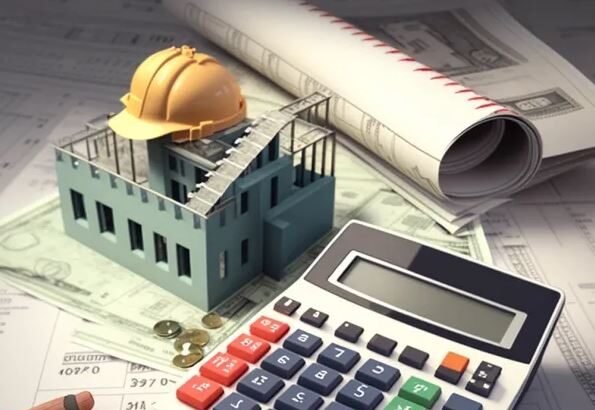
Residential construction estimation plays a crucial role in construction projects. It helps in predicting the costs associated with materials, labor, and other expenses. This ensures that projects stay within budget and avoid unexpected financial strain.
Additionally, it aids in efficient resource allocation. With accurate estimates, construction managers can plan better and make informed decisions. This leads to timely project completion and enhances overall project management.
Understanding Residential Cost Estimation
Residential cost estimation involves calculating the costs related to building a residential property. This includes costs for materials like bricks, cement, and timber. It also covers expenses for labor, equipment, permits, and other necessary items.
Accurately estimating these costs is vital. It helps project managers budget effectively and avoid overspending. This practice allows for better resource planning and allocation. It ensures that the project progresses smoothly without financial surprises.
Key Components of Cost Estimation in Construction
Cost estimation in construction involves several critical components. The foremost is material costs, including items like bricks, cement, and timber. These materials must be budgeted accurately to avoid shortages or surpluses projects on time and within budget while maintaining a high standard of work. Labor costs are another significant component. This includes wages for skilled and unskilled workers.
Other important elements are equipment and permits. Equipment may include machinery or tools that are essential for construction. Permits cover the legal requirements for building in a particular area. Contingency costs must also be considered. These are funds set aside for unforeseen expenses. All these elements combined contribute to a comprehensive and accurate cost estimate.
Importance of Accurate Cost Estimation
Accurate cost estimation is crucial for controlling the budget of a construction project. It helps ensure that all expenses are accounted for, preventing cost overruns and financial issues. By predicting costs correctly, project managers can allocate resources efficiently and avoid delays caused by insufficient funds.
Furthermore, it enhances decision-making by providing a clear financial picture from the start. This allows for better planning and reduces the risk of unexpected expenditures. Ultimately, precise estimations contribute to the successful completion of construction
Tools and Software for Residential Cost Estimation
Various tools and software simplify the process of estimating costs in residential construction. These tools offer features that streamline data collection and analysis. Some popular options include spreadsheets, estimation software, and project management platforms. Spreadsheets are simple and versatile, but they may lack advanced functionalities.
Estimation software often comes equipped with databases of material and labor costs. This ensures more accurate calculations. Project management platforms integrate estimation with scheduling and resource management. They enhance collaboration among team members. Using these technologies, construction managers can make more informed decisions and keep projects on track.
Benefits of Using a Residential Cost Estimator
A residential cost estimator ensures projects stay within budget. It provides accurate cost predictions for materials and labor. This helps avoid financial surprises. With precise estimates, resource allocation becomes more efficient. It aids in better planning and decision-making. These tools save time by automating calculations.
Cost estimators also improve project management. They offer a clear financial overview from the start. This reduces the risk of overspending. Additionally, they enhance communication among team members. Everyone stays informed about the budget. Ultimately, using a cost estimator contributes to the successful and timely completion of construction projects.
Common Challenges in Residential Cost Estimation
Challenges in residential cost estimation can impede project success. One common issue is the accuracy of material costs. Prices can fluctuate due to market conditions. This makes it difficult to predict expenses precisely.
Another challenge is labor cost variability. Unforeseen factors, like worker availability, can affect wages. Additionally, estimating permits and equipment costs can be complex. Each project has unique requirements and constraints. Addressing these challenges requires careful planning and flexible budgeting.
Best Practices for Effective Cost Estimation
Effective cost estimation involves detailed planning and accurate data collection. Begin by gathering comprehensive information about materials, labor, and equipment. Use historical data and current market prices for precise estimates. Consistently update figures to reflect changes in costs.
Communication is vital. Engage with all stakeholders to identify potential cost factors. Use specialized software to streamline the estimation process. Always include contingency funds for unexpected expenses. Regularly review and adjust estimates to stay aligned with project progress. These practices ensure better budget management and prevent financial surprises.
Case Studies: Successful Cost Estimation in Residential Projects
Case studies provide real-world examples of effectively implemented cost estimation techniques. They showcase various strategies and the results achieved. By studying these examples, project managers can gain insights into best practices. These insights help in refining their approaches to cost estimation.
These case studies often highlight the importance of meticulous planning and regular updates. They also demonstrate how accurate estimations lead to successful project completions. Furthermore, they serve as a reference for handling common challenges. Learning from real experiences helps avoid potential pitfalls and improve future project outcomes.
Future Trends in Residential Cost Estimation
Emerging technologies are transforming how construction projects are estimated. Artificial intelligence and machine learning are becoming integral, offering predictive analysis based on historical data. These technologies help in forecasting costs with greater accuracy. Additionally, they allow for adapting quickly to market changes.
Sustainability is also shaping cost estimation. Green building materials and practices are now a key consideration. These elements affect both initial costs and long-term savings. Integrating sustainability into cost estimation ensures that projects are environmentally friendly. It also makes them more cost-effective over time. This trend reflects a growing focus on responsible construction.
To read more articles visit Thesimplesource
Conclusion
In conclusion, accurate cost estimation plays a vital role in the successful management of residential construction projects. It helps prevent budget overruns and ensures that all expenses are accounted for. By using reliable tools and adopting best practices, project managers can make well-informed decisions that keep the project on track.
Moreover, emerging technologies like AI and sustainable practices are significantly enhancing the accuracy and efficiency of cost estimations. Case studies provide valuable insights into effectively tackling challenges and employing robust strategies. Ultimately, thorough planning and continual updates lead to the seamless completion of construction projects, both on time and within budget.





